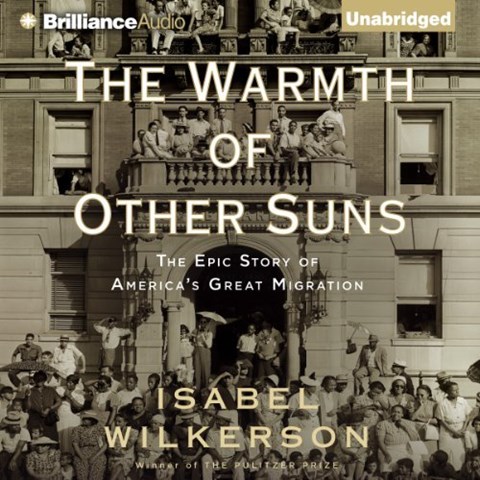

The author deftly intersperses their stories with short vignettes about other individuals and consistently provides the bigger picture without interrupting the flow of the narrative. Foster,” but “spat out ‘Doc’ as if they were addressing the cook.” Though each of Wilkerson’s subjects faced discrimination in the North as well, they felt a greater sense of freedom to pursue their own visions of the American dream.

Foster moved to California because no Southern hospitals would hire an African-American surgeon whites in the South wouldn’t even call him “Dr. Starling, after leading an attempted sit-down strike of some African-American fruit-pickers, fled Florida under threat of death.

Gladney and her family decided to leave Mississippi after a relative, suspected of stealing turkeys, was nearly beaten to death by whites. Wilkerson uses their histories to tell the larger story of how institutionalized racism helped spur the Great Migration of millions of Southern African-Americans to northern, midwestern and western states. The author interviewed more than 1,200 people for this sweeping history, which focuses mainly on the personal stories of three Southern African-Americans who uprooted their lives to move to other parts of America: Ida Mae Brandon Gladney, a sharecropper’s wife who moved from rural Mississippi in the midst of the Great Depression, eventually landing in Chicago George Swanson Starling, who went from picking fruit in north Florida to becoming a train attendant in 1940s New York and Robert Joseph Pershing Foster, an accomplished surgeon who moved from northern Louisiana to Los Angeles in the 1950s. In her ambitious debut, Pulitzer Prize–winning journalist Wilkerson (Journalism, Narrative Nonfiction/Boston Univ.) examines the Great Migration of African-Americans from World War I to the 1970s.


 0 kommentar(er)
0 kommentar(er)
